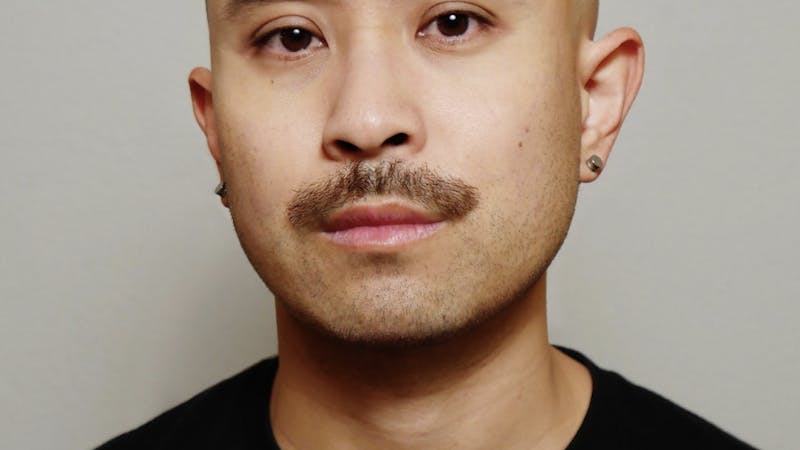Review: “Joker: Folie à Deux” has no punchline
Score: ★★
It’s hard to understate how big of a cultural moment “Joker” was. It was a rare moment when a film succeeded in nearly every metric a film can. It grossed over a billion dollars, was critically praised and was nominated for 11 Academy Awards, with star Joaquin Phoenix taking home one of the two Oscars the film ended up winning.
Even outside the numbers, everyone talked about “Joker” for months before and after its release. Critics and fans alike delved into the discourse, fueled in part by Martin Scorsese's provocative claims about the legitimacy of the superhero genre and also by Marvel’s critical mass moment, “Avengers: Endgame”, released earlier that year.
But the most fascinating conversation sparked by the original “Joker” was about its content. Before anyone had even seen the movie, people deemed the story’s approach potentially problematic. By enabling audiences to sympathize with a supervillain, would the film encourage people to act in the same way the character does?
The answer was ‘no’, yet the question itself loomed over the film’s release. People speculating about the film’s messaging became more interesting than the film itself, which proved to be a straightforward appropriation of, ironically enough, Martin Scorsese’s “Taxi Driver.”
This lack of attention to the actual message within the original “Joker” clearly bothered writer-director Todd Phillips because “Joker: Folie à Deux” is a literal and metaphorical relitigation of the original film’s message. Phillips treads water over the same thematic points and moments from his first film, a choice that quickly tires out the audience, the actors and any intriguing ideas found elsewhere in the film.
“Joker: Folie à Deux” starts where the last film left off. Arthur Fleck, also known as the Joker, is in Arkham Asylum, where he is treated poorly by a prison staff led by Guard Jackie (Brendan Gleeson). Fleck is finally about to be tried for his crimes when he meets Lee Quinzel (Lady Gaga), starting a romance that revitalizes Fleck’s demeanor and outlook on his Joker persona.
Fleck is effectively torn between his two personalities, the Joker side, which Quinzel attempts to coax out of Arthur, and the Arthur side, which positive influences like lawyer Maryanne Stewart (Catherine Keener) attempt to support. This divide within Fleck is summed up nicely in a cartoon that plays at the beginning of the film, which is an inaccurate indicator of the creativity to be found in the remainder of the film.
To explore this duality, Phillips chooses to go in two different directions — “Folie à Deux” is simultaneously a send-up of old-school Hollywood musicals and a courtroom drama. The send-up of Hollywood musicals is how the Joker side of things manifests itself, and the courtroom drama is how Arthur Fleck is brought back to reality. But the issue is one of commitment. The realism of the legal proceedings prevents the musical sequences from being properly audacious, and the time spent on the musical moments means that the trial sequences can never build up any steam.
The result is a film that doesn’t know itself, a tap dancer with one foot anchored too firmly in reality to properly play any song. This lack of self-assurance makes everything dull. It’s hard to care when the film doesn’t put in the effort to commit to its ideas.
It especially doesn’t help that plot beats from the first film are re-examined in the courtroom, and nothing new is introduced. Phillips needs to make sure that everyone gets the point he made in the first film, even if that comes at the expense of making a good sequel that offers something new.
That “something new” is, I guess, Harley Quinn, portrayed by an apathetic Lady Gaga. This character represents the allure of embracing the Joker identity, and her viewpoint is corroborated by the various protestors who gather outside the courthouse throughout the film. By doing this, Phillips is addressing the critics of the first “Joker” that dominated the conversation — an intriguing metatextual choice. Unfortunately, any intrigue to be found is muddled by the fact that I have no idea what Harley Quinn’s goals are or why she is doing anything at any point in time.
What “Folie à Deux” does offer is a well-polished product, even if the story crumbles under the weight of its ideas. Joaquin Phoenix is a great actor, and even though he is given nothing new to work with, he still maintains his screen presence as the Joker, even if he is a bit subdued. Gaga also is trying to work with what she has, but comes off as bored, in part because of the character, but more likely because of the script she has to read. Gleeson and Keener round out the main cast, and again, I love their presence, but because I love the actors - not the characters.
“Folie à Deux” does look good and is conceptually interesting, but ultimately commits the greatest sin a movie can — it’s just boring. Despite all it tries, it comes off as a shrug. It’s all build-up for a joke you’ve already heard before.
More from The Rice Thresher

Andrew Thomas Huang puts visuals and identity to song
Houston is welcoming the Grammy-nominated figure behind the music videos of Björk and FKA twigs on June 27.

Live it up this summer with these Houston shows
Staying in Houston this summer and wondering how to make the most of your time? Fortunately, you're in luck, there's no shortage of amazing shows and performances happening around the city. From live music to ballet and everything in between, here are some events coming up this month and next!

Review: 'Adults' couldn’t have matured better
Sitcoms are back, and they’re actually funny. FX’s “Adults” is an original comedy following a friend group navigating New York and what it means to be an “actual adult.” From ever-mounting medical bills to chaotic dinner parties, the group attempts to tackle this new stage of life together, only to be met with varying levels of success.

Please note All comments are eligible for publication by The Rice Thresher.